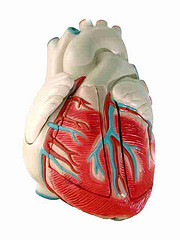U.S. hospitals spent up to $4 billion adding angioplasty services over a four year period, but the new services did little to improve access to timely medical care, says a study published Tuesday in the journal Circulation: Cardiovascular Quality and Outcomes.
Between 2004 to 2008, some 251 hospitals added the invasive and often life-saving cardiac care, but researchers found that the new programs were mainly built near existing ones in competitive health care markets, rather than where the need for the services was greatest.
“The typical center did not improve patient care in the United States,” said Thomas W. Concannon, the study’s lead author, an assistant professor at the Tufts University School of Medicine in Boston and a policy researcher at RAND, the nonprofit research organization. “Hospitals are thinking more about the competitiveness issue than the health of the population.”
The percent of the U.S. population with timely access to angioplasty — a drive time of under one hour — improved by less than 2 percent during the study period. At the same time, the number of hospital-based cardiac labs and clinics increased by 16 percent, the study found. The millions of dollars hospitals have spent adding the services led to higher insurance premiums for everyone, researchers concluded.
“This is an incredible statement that our health care system is not more coordinated and that we are poorly leveraging our resources,” said Dr. Ralph Brindis, past president of the American College of Cardiology. He said the doctors’ group is concerned the proliferation of hospitals offering angioplasty has led to too many hospitals doing too few of the procedures, which could hurt quality of care.
About 1 million angioplasties are done in the United States each year. The number actually is declining due to falling rates of smoking, increased use of statin drugs and better procedures that decrease the need for repeat angioplasties, Brindis said.
Angioplasty remains the top treatment for people having a heart attack or those with symptoms of a coronary blockage. It involves threading a catheter through veins and using a tiny balloon to open a clog. It can also involve propping the artery open with a mesh stent.
“The problem is everyone wants access to everything at their local hospital … and they don’t connect that with paying higher costs,” said Paul Gionfriddo, a health consultant in Palm Beach County, Fla.
Boca Raton Regional Hospital and Bethesda Memorial Hospital, both in Palm Beach County, Fla., are two hospitals that added angioplasty services between 2004 to 2008. Both hospitals were within a 20-minute drive of existing angioplasty centers. When hospitals added the service, they stressed how they were becoming more convenient for patients.
Boca Raton declined to comment on the study, and Bethesda did not immediately return phone calls.
The study found hospitals were most likely to add angioplasty if they had little state oversight of new services and the hospital had high rates of patients with private health insurance, which pays better than government insurance programs such as Medicare and Medicaid.
About 80 percent of the nation’s population lives within an hour drive of a hospital with the service, the study said.
There were some exceptions to the findings in medically underserved areas. Access to angioplasty in Mississippi grew sharply during the study period, and in Missouri the growth in programs led to a meaningful drop in projected transport times for patients.







